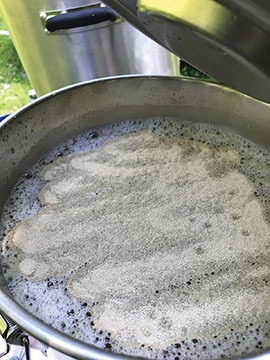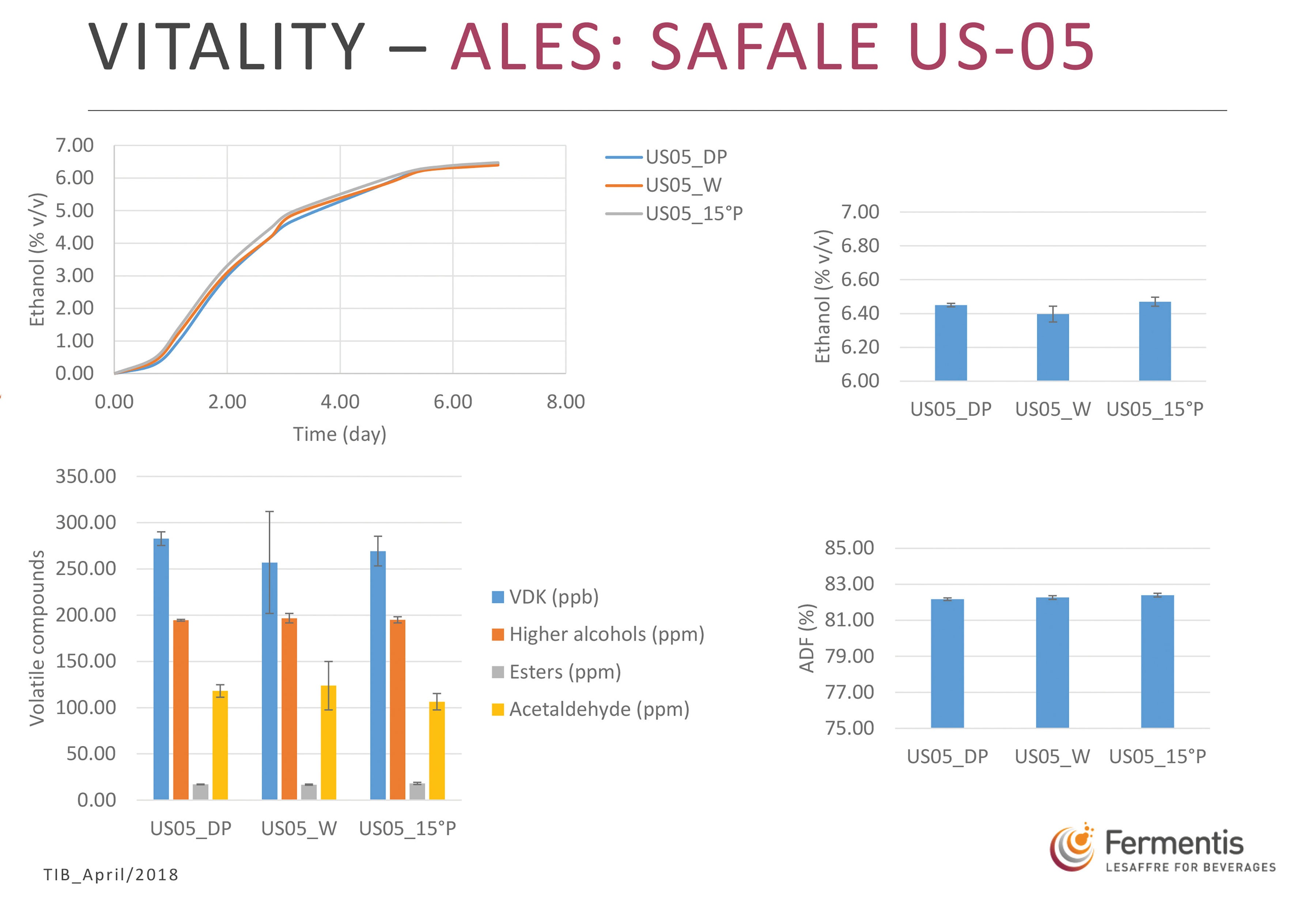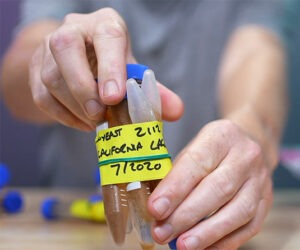Optimizing Dry Yeast

From a variety of homebrewing resources it has been stated that dry yeast should be rehydrated prior to pitching the yeast. Yet, this method that is often followed by homebrewers because it’s the way it has been done for years, has been questioned and argued in recent years. It got me thinking, is rehydrating dry yeast
really necessary?
Dry Yeast Conventional Wisdom
From the book The New Complete Joy of Homebrewing by Charlie Papazian: “One can significantly improve the performance of dried yeast (and consequently the flavor of your beer) by properly rehydrating it. Do this by boiling 1.5 cups of water for 5–10 minutes, pour into a sanitized glass jar (washed and boiled for 15 minutes), cover with clean foil and let cool to 100–105 degrees °F (31–41 °C). Do not add any sugars. Add dried yeast and let rehydrate for 15–30 minutes, then bring the temperature of the rehydrated yeast close to the wort and pitch.”
An internet forum of HomeBrew Digest (hbd.org) conducted a question and answer session with the late Dr. Clayton Cone of Lallemand in 2008. One of the members of HBD asked about the practice of rehydrating yeast. Luckily this exchange is available on the internet even today at: https://koe
hlerbeer.wordpress.com/2008/06/07/rehydrating-dry-yeast-with-dr-clayton-cone/. I will highlight one paragraph of Dr. Clayton Cone’s response:
“How do many beer and wine makers have successful fermentations when they ignore all the above (rehydrating dry yeast)? I believe that it is just a numbers game. Each gram of Active Dry Yeast contains about 20 billion live yeast cells. If you slightly damage the cells, they have a remarkable ability to recover in the rich wort. If you kill 60% of the cells you still have 8 billion cells per gram that can go on to do the job at a slower rate.”
There are two important aspects being discussed above:
1. There are 20 billion live yeast cells in a gram of yeast; this means that a fresh 11.5 gram sachet contains 230 billion live yeast cells.
2. He intimates that by direct pitching dry yeast there can be significant yeast death. He illustrates this by saying “If you kill 60% of the cells.” Although, another interpretation is that he mentions the success of dried yeast even with the loss of many cells for a broader reason, including incorrect rehydration of yeast (such as using distilled water, agitation, thermal shock while pitching, etc.), which is how José Pizarro, Regional Sales Manager for Fermentis, explained it when reading this quote. (Dr. Cone passed away in 2018.)
Similar information is presented within the book Yeast: The Practical Guide to Beer Fermentation by Chris White & Jamil Zainasheff: “Failure to rehydrate dry yeast properly will result in the death of approximately half the cells.”
There sure seems to be a common concern between Dr. Clayton Cone, Dr. Chris White, and Jamil Zainasheff that significant yeast cell death can occur if yeast is not rehydrated properly.
I think I’ve offered enough examples, but trust me when I say that many other homebrewing books include similar advice regarding the importance of rehydration, but what do the yeast manufacturers say?

Dry yeast manufacturer data sheets
Yeast manufacturers provide data sheets for their products that greatly aid in properly using them. Let’s take a look at what a couple of the larger dry yeast labs say on the subject.
Lallemand (LalBrew)
Lallemand offers this best practice advice for a rehydration protocol for their yeast:
“• Sanitize the upper part of the pack (e.g. ethanol 70%) and the scissors before opening.
• Sprinkle the yeast on the surface of 10 times its weight in clean, sterilized water at 30–35 °C (86–95 °F).
• Leave it undisturbed for 15 minutes, stir gently to suspend yeast completely.
• Leave it for 5 more minutes at 30–35 °C (86–95 °F).
• Attemperate in steps at 5-minute intervals of 10 °C (18 °F) to the temperature of the wort by mixing aliquots of wort in order to adjust the temperature of the hydrated yeast, with no delay.
Please Do Not
• Do not use distilled or reverse osmosis water, as it will result in loss of viability.
• Do not stir right after sprinkling, as it may break the yeast cell membrane.
• Do not allow attemperation to be carried out by natural heat loss. This will take too long and could result in loss of viability or vitality.”
There is a lot of useful information to take from this:
• You want to use 10 times the weight of sterile water (which contains minerals) for the rehydration process.
• The water temperature should be 86–95 °F (30–35 °C).
• Rehydrate for a total of 20 minutes (15 and 5).
• Get the yeast cream in temperature agreement with the wort via attemperation.
• The rehydration protocol also states aerating the wort when pitching dry yeast is unnecessary because the yeast contains reserves of carbohydrates and unsaturated fatty acids to achieve active growth (except in high-gravity worts, where it is still recommended).
Fermentis SafAle US-05 Yeast
Fermentis also offers rehydration instructions for their yeasts. Here is what the US-05 data sheet says:
“Sprinkle the yeast in minimum 10 times its weight of sterile water or wort at 25 to 29 °C (77 °F to 84°F). Leave to rest 15 to 30 minutes. Gently stir for 30 minutes, and pitch the resultant cream into the fermentation vessel. Alternatively, pitch the yeast directly in the fermentation vessel providing the temperature of the wort is above 20 °C (68 °F). Progressively sprinkle the dry yeast into the wort ensuring the yeast covers all the surface of wort available in order to avoid clumps. Leave for 30 minutes, then mix the wort using aeration or by wort addition.”
The rehydration protocol from Fermentis is similar to that from Lallemand, but with some differing values for temperature (77–84 °F/25–29 °C) and rehydration time duration of 45–60 minutes (15–30 and 30).
I would be remiss to not highlight that Fermentis also provides instruction for just conducting a direct pitch of the dry yeast (as detailed in the above paragraph from the data sheet).
Straight from the manufacturers
As discussed, there is indeed quite a bit of documentation about the importance and benefits of rehydrating dry yeast. I figured I would reach out to a couple of the yeast manufacturers (Lallemand and Fermentis) to see if there are any more details here.
Lallemand (LalBrew)
Lallemand, who produces LalBrew (formerly called Danstar) dried yeast, state on their website that rehydration is recommended, but not essential. “Rehydration is a simple process which allows the dry yeast to become liquid yeast, reducing the osmotic stress and enhancing a homogeneous dispersion,” it says.
In discussion with Eric Abbott, Lallemand’s Technical Advisor, he further informed me that “the yeast cell membrane is more non-selectively permeable during the first few minutes of rehydration, so rehydrating in water instead of directly in the beer reduces the risk of absorbing toxins into the cell.”
That said, there have been improvements in dry yeast production at Lallemand so dried yeast is now more robust and resistant to stress than it previously was. Taking it a step further, the impacts of yeast rehydration can be strain dependent, however Lallemand is confident in recommending dry pitching for any of their stains.
“We do see some strain-specific differences in lag phase, attenuation, and flavor, but these differences are generally quite small and should not deter any brewer from trying dry pitching. In some cases dry pitching gives better performance and we now recommend dry pitching our New England and BRY-97 strains as recent lab trials have shown shorter lag phases as well as greater attenuation. These tests are ongoing as we test dry pitching in different types of wort (high gravity, sour, etc.).”
Eric added that Lallemand will provide strain-specific recommendations for a particular beer based on their most current research.
Fermentis
Just like Lallemand, Fermentis has conducted continual process improvement of their production of dry yeast. They recently conducted a scientific study in collaboration with the Institut Meurice and Odisee University to quantify the ability of their yeast strains to survive rehydration in a number of varying media and rehydration conditions. From discussion with José Pizarro of Fermentis, the results of these studies revealed some interesting facts.
For one, Fermentis yeast strains are very tolerant of the temperature of rehydration. They studied rehydration temperatures of 46.4, 53.6, 60.8, 68, 89.6 and 104 °F (8, 12, 16, 20, 32, and 40 °C) and for a given yeast strain the viability performance was similar. They also studied rehydration with varying media of water (46.4 and 68 °F/8 and 20 °C) and wort of varying density (1.028, 1,061, and 1.106 also at 46.4/68 °F). Again, the viability performance was similar on a per strain basis. These results indicate that the Fermentis strains are very robust with the ability to have high viability when pitched under a variety of conditions. Just as was indicated by Lallemand, the exact performance varies depending on the strain.
The Fermentis, Institut Meurice & Odisee University team further studied the fermentation performance of all of their strains under varying pitch conditions in regards to time of fermentation, amount of volatile compounds produced (e.g., VDK, esters, higher alcohols, acetaldehyde), ethanol produced, and attenuation achieved. Once again, they achieved consistent performance across varying conditions (see chart below).
Based upon these results there is no significant difference in pitching Fermentis homebrewing strains directly vs. conducting a rehydration process. (A snapshot of the data from this study is available to read at https://fermentis.com/en/news-from-fermentis/technical-reviews/e2u-direct-pitching/ and the entire study is accessible upon request).
Where do we go from here?
In my research of this article I found nothing negative about rehydrating dry yeast, however it seems that there is no longer the same need to do it for most beer styles as there used to be. The choice really is up to the individual brewer and the process they feel most comfortable following.

W: Rehydration in water at 86 °F (30 °C) with moderate agitation. 15°P: rehydration in 15°P wort at 68 °F (20 °C) with moderate agitation.



